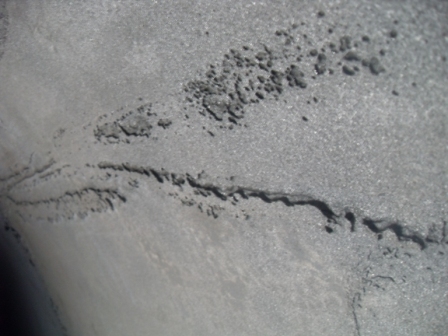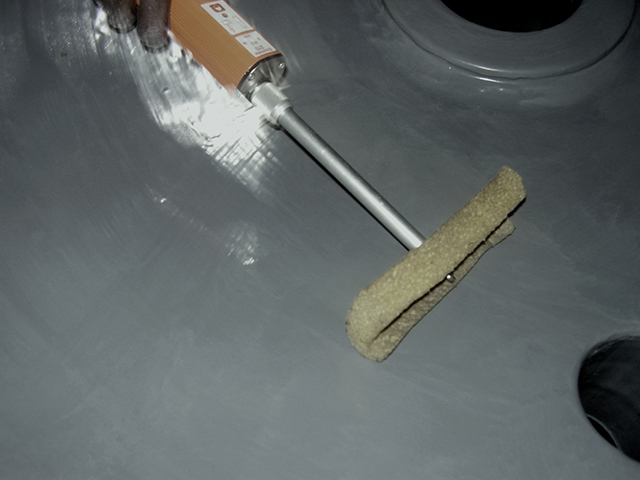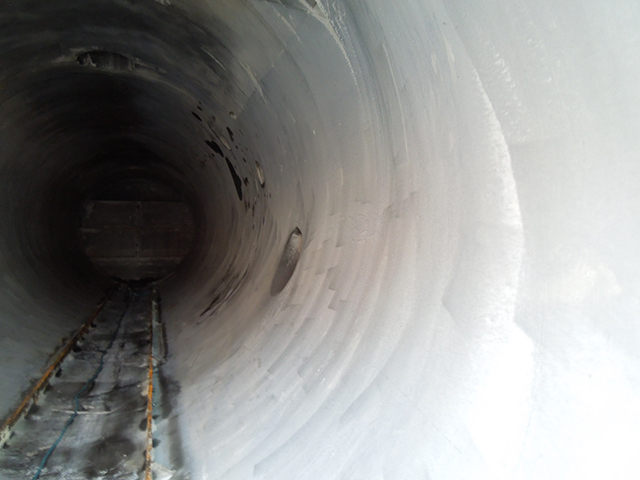The costs of corrosion can be colossal, especially where safety-critical equipment is concerned. When looking at the expenses associated with corrosion, particularly in the oil, gas, and petrochemical industries, direct and hidden costs should be considered. Direct costs include equipment and parts replacement, whereas hidden costs account for downtime, delays, litigation, and other unplanned overheads.
The most damaging form of corrosion is localized corrosion. It occurs when the steel substrate is immersed in a liquid in the presence of chemical pollutants and/or galvanic cells. Unlike uniform corrosion, where all parts of the metal surface corrode at a uniform rate, localized corrosion does not proceed uniformly and is focused at sites where corrosion proceeds much more rapidly, depending upon the environment. Crevice and pitting corrosion represent the main types of localized corrosion. In uniform corrosion, anodic and cathodic sites develop across the surface of the steel substrate and constantly change polarity with respect to each other, which results in even oxidation over the entire surface.
In pitting corrosion, however, an anode develops and maintains its electrical potential with respect to the surrounding metal. Consequently, due to the large cathode-to-anode ratio, corrosion progresses rapidly and forms a pit. Pitting corrosion is especially prevalent in steels that have the ability to passivate—particularly in stagnant conditions where the formation of a protective film is hindered by the presence of chloride ions. Pitting corrosion is considered to be more dangerous than uniform corrosion damage because it is more difficult to detect, predict, and design against. When identified, pitting damage has always been cumbersome to repair.
Corrosion inhibitors, cathodic protection, and protective coatings can be used to prevent and control pitting corrosion. For a variety of reasons, these protective systems have been known to fail. Once pitting occurs, a repair method should be able to satisfy three basic needs: (1) quick repair, (2) ease of application, and (3) rapid return to service. Additionally, the repair method would ideally withstand service conditions for a considerable amount of time.
Pitting Repairs: Welding
Localized corrosion in the form of deep pits can be repaired by welding to restore the original profile; however, sufficient expertise and special tools are required. If either is lacking, repairs can do more harm than good with risks of distortion, weld cracks, stress corrosion cracking, and health and safety risks associated with hot work.

Welding repairs carried out on metal substrates over 30-mm thick must also involve post-weld heat treatment (PWHT). In some instances, PWHT may result in the loss of weld metal strength and toughness. Also, the mechanical properties of the weld joint may deteriorate as the vessel is repeatedly repaired. At times, PWHT takes ~40 hours to complete, which can be very costly, especially offshore. Furthermore, welding over a metallic substrate applies metal onto metal; and the original problem is not resolved unless the metallic substrate is coated with an organic protective material.
Alternative to Welding
Another viable method for repairing pitting corrosion is the use of cold-applied epoxy materials. These 100% solids, paste-grade materials have been on the market since the 1960s and have been continuously improved to withstand greater temperatures and pressure levels as well as various in-service conditions. Based on positive qualification testing data, they have been successfully applied in the field during the past two decades. For instance, an amine reboiler vessel at a gas terminal in the United Kingdom suffered from corrosion with heavy pitting, which was discovered in 2011 (Figure 1). The operator required the vessel to be back in service as soon as possible and was looking for an alternative solution to hot work.

A paste-grade epoxy material was chosen to fill the pits, and a modified epoxy novolac coating was applied afterwards to protect the wall (Figure 2). Both the coating and paste-grade material were designed to achieve full cure in high-temperature immersion service, which minimized downtime.
The reboiler was opened for inspection in July 2015. No further pitting damage or corrosion was identified (Figure 3). Minor localized repairs were completed on the coating and the reboiler was returned to service.

Cold-Applied Repairs: Application Methodology
In order to ensure fitness-for-service when filling pits with epoxy paste-grade materials, the contracting company must ensure that the surface is prepared correctly, the repair material is mixed and applied properly, and the material is allowed to cure according to the manufacturer’s instructions. A typical pit-filling procedure is summarized as follows:
-
The vessel’s substrate is dry and free of contaminants.
- Sharp edges or irregular protrusions are ground down to a smooth contour with a radius of not less than 0.1 in (3 mm). All surfaces must then be grit blasted using an angular abrasive to near-white metal finish (e.g., NACE No. 2/SSPC-SP 10, Near-White Metal Blast Cleaning1) with a minimum profile of 3 mils (75 µm).
- Paste-grade epoxy material is mixed at a correct ratio.
- The material is applied onto the substrate until the original wall thickness is restored.
- The material is allowed to solidify at ambient temperatures before achieving full cure in service.
- All work is carried out in accordance with the manufacturer’s instructions.
Historically, one drawback of using epoxy materials for pitting repairs was amine bloom, which would appear on the surface during cure. Bloom manifests as a sticky deposit and affects overcoatability and intercoat adhesion. It must be removed by first washing the affected area with a hot detergent solution followed by a fresh water wash, and then frost blasting prior to the application of a protective coating over the pitting repair. This leads to extended application time and increased labor costs.
A recent innovation in raw materials is non-bloom technology, where frost blasting of the applied material prior to the application of a protective lining is not required. This innovative raw material was incorporated into the reformulated version of a two-part repair composite based on a solvent-free, epoxy resin-reinforced silicon and steel alloy, Belzona 1511† (Super HT-Metal), developed by Belzona Polymerics, Ltd. (Harrogate, United Kingdom). In addition to incorporating non-bloom technology, the repair composite also incorporates rubbery domains in its polymer matrix, which improve the composite’s adhesion, flexibility, and toughness.
Continuous advancements in raw materials make it possible for coating and composite manufacturers to produce systems that minimize the risks typically associated with hot work and, at the same time, are easier to apply. These advancements help reduce the indirect costs of corrosion, including downtime, delays, litigation, and other unplanned overheads.
Contact Marina Silva, Belzona Polymerics, Ltd.—e-mail: msilva@belzona.com.
Reference
- NACE No. 2/SSPC-SP 10, “ Near-White Metal Blast Cleaning” (Houston, TX: NACE International).
Bibliography
API 510. “Pressure Vessel Inspection Code: In-Service Inspection, Rating, Repair and Alteration.” Washington, DC: API, 2014.
Ferguson, K. R. “Vessel Corrosion Repair-1 Weld Overlay Chosen for Corrosion Repair at Texas CO2 Plant.” Oil Gas J. 89, 48 (1991).
Gupte, S. V. “Inspection and Welding Repairs of Pressure Vessels.” NDT.net. July 2004. www.ndt.net/article/v09n07/rajesh/rajesh.htm. July 13, 2015.
Gysbers, A. C. “Avoiding 5 Common Pitfalls of Pressure Vessel Thickness Monitoring.” Inspectioneering 20, 4 (2014).
Partridge, I., J. Wintle, and J. Speck. 2005. “Pressure Vessel Corrosion Damage Assessment.” TWI, November 2005. www.twi-global.com/technical-knowledge/published-papers/pressure-vessel-corrosion-damage-assessment-november-2005. July 13, 2015.
†Trade name.